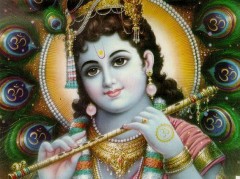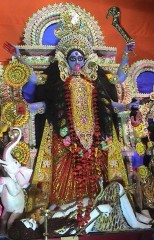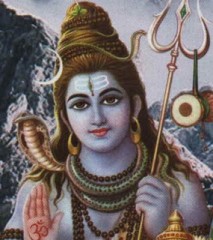01/08/2012
About the significance of hair in Hindu mythology
“Hair is a powerful metaphor in Hindu mythology.
Krishna has curly hair.  Balarama has straight silky hair. Shiva has thick matted hair. The Goddesses – Lakshmi, Saraswati and Durga – have loose unbound hair.
Balarama has straight silky hair. Shiva has thick matted hair. The Goddesses – Lakshmi, Saraswati and Durga – have loose unbound hair.
Hair has long been used in India to convey a message.
Unbound unruly hair represents wild nature.
Well oiled and combed hair represents culture.
That is why the wild Kali’s hair is unbound while the domestic Gauri’s hair is well bound and in her temples devotees make offerings of gajra, a string of flowers to tie up the hair.
In the Mahabharata, Draupadi’s unbound ha ir represents her fury.
ir represents her fury.
In the Ramayana, the last jewel of Sita is the hairpin that she gives Hanuman to convey to Ram that her honor, and his reputation, stand in a precarious position.
Shiva’s dreadlocks represent the potent power of his mind that enables him to catch and bind the unruly and wild river-goddess Ganga.
Shaving the head is associated with asceticism.
Buddhist monks shaved their heads.
Jain monks plucked their hair from the roots; to survive the pain is to convey that one is willing to suffer the challenges offered by monasticism.
Brahmins shaved their head but left a tuft in the end, an indicator that they were not monks but very much part of worldly life. This Brahmin tuft is tied up to show co ntrol; Chanakya of legend famously untied this tuft to display his rage and tied it only when the Nanda dynasty of Magadha had been brought to its knees.
ntrol; Chanakya of legend famously untied this tuft to display his rage and tied it only when the Nanda dynasty of Magadha had been brought to its knees.
The hair of widows was shaved to enforce monasticism on them. It was this or the pyre, in medieval India, for those unfortunate women. The head is shaved to display bereavement as well as devotion.”
Source: http://devdutt.com/the-offering-of-hair/
08:02 Posted in Incredible India! | Permalink | Comments (0) | Tags: india, hindu mythology, hair, importance of hair | ![]() Facebook | |
Facebook | |














